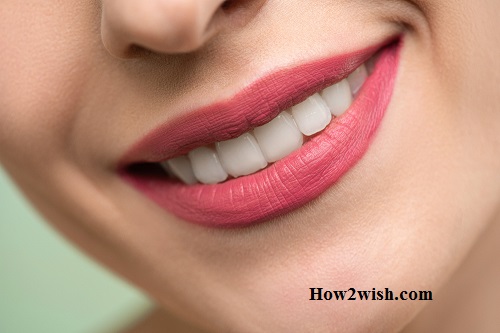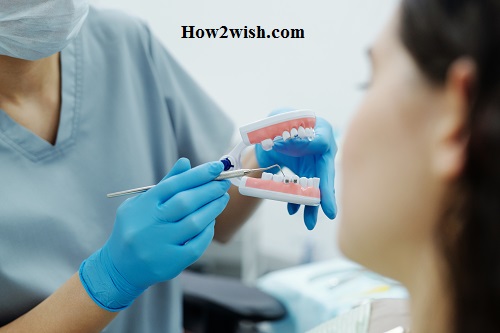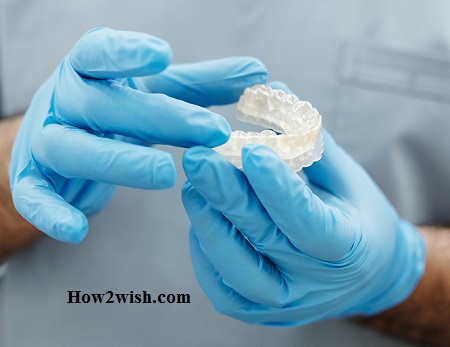Mouthguards are used to align teeth in orthopedic dentistry, and this type of product can also be used for whitening, fluoridation, and other purposes. Designs are gaining more and more popularity with patients due to their transparency, aesthetics, wearing comfort, easy maintenance, and other obvious advantages.
The use of onlays helps to solve several dental problems. However, there is also a certain list of contraindications when such therapy cannot be carried out.
Let’s look at the types of corrective plates, their principle of operation, advantages, and disadvantages, and also deal with the features of products with different purposes.

What is kappa
These are removable pads installed on the dentition, which are made using special technology from high-strength silicone with good elasticity. They tightly cover all incisors, canines, premolars, and molars, repeat the individual shape of the jaw arches and take into account the micro-movement of the elements.
In the process of wearing, there is an imperceptible pressure for patients. All units gradually assume an anatomically correct position. For the entire therapeutic course, the pads will have to be changed several times for new ones to gradually increase the pressure.
Such designs do not bring any harm to health, do not cause allergic reactions, and do not harm the enamel layer. They are comfortable and painless when worn, invisible to others. Without much difficulty, you can get them out of the mouth while eating or performing hygiene procedures.
What are mouthguards for?
Thin plates in most cases are made of polymeric materials (bioplastic and silicone). They are used primarily to normalize the position of crooked dental units by the physical impact on the crowns.
There are many cases where the use of such products is reasonable and appropriate. For example, they help eliminate:
- Large interdental spaces;
- Malocclusion;
- Diastema (the gap between the front incisors);
- Defects in the dentition;
- Crowding and deployment of elements around its axis.
The plates show high efficiency in patients of different ages. It does not matter at what stage of development this or that defect is. Overlays are invisible to others when communicating, and do not impair the aesthetics of a smile and diction.
Operating principle
Before you install mouthguards to correct teeth for an adult or a child, you must go through a certain list of diagnostic tests. First of all, the doctor performs a thorough visual and instrumental examination to establish the required type of exposure in a particular case.
Then plaster casts are made, which repeat the shape of the patient’s dental system with maximum accuracy. At present, a three-dimensional modeling technique is successfully used, when the image of the jaws is displayed on a computer screen. After receiving the diagnostic results and as soon as the casts are ready, an individual mouthguard is developed, which is subsequently installed in the oral cavity.
When worn, the lining evenly affects the dentition. Each element gradually shifts, taking a normal physiological position. After the teeth become even, the structure is to be removed, and the therapy proceeds to the next stage.
In most cases, one course of the use of the plates is not enough. We have to take new casts and make an additional set from them. All manipulations can be repeated repeatedly until all the units take the desired position.

It is impossible to predict in advance how long the therapy will take since its duration can range from several months to 2-3 years with a different number of phased courses. Modern technologies allow dentists to determine the approximate terms of treatment already at the initial appointment, as well as calculate the estimated cost.
Types of overlays
Products are divided into different types depending on the tasks:
- The medical type is made of polymeric materials with increased elasticity 1-3 mm thick. They are prescribed to eliminate involuntary clenching and grinding of teeth at night (bruxism). They are also prescribed to correct the tone of the masticatory muscles.
- Retention mouthguards after braces – this means that the structures are used to consolidate the results of orthodontic treatment. If you neglect this stage, the effect of wearing corrective products will be reduced to zero.
- Applications are created from thin and very dense materials. They are designed for home whitening of dentition. Standard models are sold in pharmacy chains. However, the most effective options are those made according to the individual parameters of the patient in the laboratory.
- Protective type. It is widely distributed among boxers, hockey players, biathletes, and other athletes. They reliably protect the dentition and hard and soft tissues of the oral cavity from mechanical damage.
The dentist prescribes specific types of constructions depending on the goals, clinical picture, financial capabilities, and other criteria. All products according to the method of manufacture can be divided into the following types:
- Standard. The most affordable option is not manufactured according to certain parameters of the patient but is produced on a serial basis. It can be used for minor defects that do not require serious correction.
- Made from thermoplastic. To give them the desired shape, you should hold them for a while in hot water. The still-heated kappa is fixed on the teeth and securely attached to them due to compliance from heating. Serious bite problems cannot be eliminated in this way, but this option is just as cost-effective as the one discussed above.
- Individual. The most effective method helps to cope with many defects in the dentition. Before their manufacture, three-dimensional modeling of the dentoalveolar system of a particular person is carried out. The use of this type of construction allows you to achieve visible results and correct the curvature of the teeth for a certain period.
Classification of overlays according to the material of manufacture:
- Polyurethane. Invisible to others when communicating. It is necessary to wear them all the time, interrupted only for meals and hygiene care.
- Silicone. A thickened version that may cause some discomfort to patients. Use such products for only a few hours during the day and all night.
Kappa for whitening
The decision to use such a technique should be made only in conjunction with the doctor. The fact is that when they are worn, active substances act on the enamel, which, if used uncontrollably, can lead to its thinning and other negative consequences.
Whitening devices are of plastic construction, on the inner surface of which specialized agents are applied in the form of a gel, then everything is put on the teeth with a little effort. You can use these products for no more than 3 weeks. At the same time, it is important to cure all diseases of the oral cavity in advance and get rid of the stone and inflammatory processes.
After bleaching, it is recommended to undergo a remineralization procedure. It will help strengthen enamel and protect teeth from carious lesions and other problems.

Fluoridation pads
According to the method of application, they are very similar to the option discussed above. They are needed to enhance the mineralization of the enamel layer, that is, to strengthen and protect dental units from the effects of the external environment. For this, it is necessary to use special preparations containing fluorine compounds. Before use, the patient must undergo professional cleaning in the clinic.
By itself, fluoridation is often indicated as an independent medical procedure, therefore, it can only be carried out as directed and under the supervision of dentists. In this case, it will not work to perform it at home.
To straighten teeth
Such structures are called “aligners”. They are plastic and silicone. The principle of operation is simple:
- A custom-made overlay is put on the entire dentition;
- There is a slight pressure on all elements;
- Incisors, canines, premolars, and molars gradually move in the right direction and take the correct position.
Treatment should be strictly under the supervision of an orthodontist. It is worth noting that aligners will not help with significant malocclusion, that is, if there is evidence, the specialist may recommend wearing braces. If such therapy is possible, then it is better to give preference to it. The patient will be able to maintain their usual lifestyle, eat their favorite food, and feel free to smile at others.
What other advantages do aligners have:
- Ease of care (just wash the product under running water and brush with paste);
- Uncomplicated oral hygiene;
- No discomfort, quick adaptation;
- Minimal risk of injury to soft and hard tissues.
After wearing braces
The orthodontic system is placed on average for 1-2 years, depending on the degree of violations and the age category of the patient. After its removal, it is necessary to consolidate the results obtained and prevent the opposite effect. One of the most popular and sought-after options in modern dentistry is retainers. What is such a mouthguard for teeth, you can see in the photo.
All About Sclerotherapy For Varicose Veins Pros & Cons {2023}
The doctor may prescribe round-the-clock constructions (removed only when brushing teeth and eating) or nightly. If you refuse to wear pads after braces, this will most likely lead to the return of the elements to their previous incorrect position. As a result, the patient will lose not only time but also money.
How long you have to walk with retainers depends on the characteristics of a particular person. In some cases, 2-3 months is enough, in others – up to several years.
How mouthguards are selected
The most convenient and effective are products made in dental laboratories according to individual casts. To choose the appropriate option that will show visible results in a particular case, it is necessary to consult a dentist. He will carefully examine the oral cavity, identify the presence of pathology, perform treatment and sanitation, and then tell you which type of construction is better to stop at.
The process then consists of the following steps:
- Making a cast of the jaws, forming a model from plaster. Creation of a three-dimensional project.
- Demonstrate the plan to the patient to discuss all the details of the treatment.
- Transfer of all materials on electronic media to the dental laboratory.
- Creation of a 3d model, on the example of which you can see all the stages of therapy and predict the desired result. If there are additions, the project is returned for revision.
- Production of an individual numbered set of overlays within 2-3 weeks. The doctor makes a schedule for replacing each set.
Advantages and disadvantages
Pros:
- Aesthetic appeal. The design is not visible to others due to its transparency and small thickness.
- Correspondence to the structural features of the maxillofacial system.
- The ability to predict the outcome of therapy with great accuracy.
- Constant control over the displacement of dental elements in the process of wearing.
- Comfort in use. The material does not rub mucous membranes and does not affect diction.
- No risk of injury to hard and soft tissues.
- Short periods of therapy in the absence of serious defects.
- Ease of maintenance and operation.
- Strength and durability.
- Fast adaptation.
- No food restrictions. During the treatment period, it is not necessary to change the diet, since the products are removed during meals.
Unfortunately, corrective plates also have negative sides:
- Ineffective in the presence of serious bite defects and other advanced problems.
- High price. The price exceeds the treatment with braces. The more severe the violation, the more expensive it will be for the patient since more kits will need to be purchased.
Indications for use
Products are prescribed for both adult patients and children. Onlays help to cope with the complex problems of the maxillofacial apparatus and improve the aesthetic component. Designs are shown to be worn when:
- Malocclusion;
- The curvature of the dentition;
- The presence of large interdental spaces;
- Bruxism (nocturnal grinding of teeth).
In the absence of pathological processes, plastics are used for:
- Protection of crowns from chips, cracks, and other damage, loss of individual elements;
- Maintaining the integrity of the mucous membranes and other soft tissues in the mouth;
- Normalization of masticatory muscle tone;
- Fixing the results of orthodontic therapy after braces;
- Effective whitening and mineralization of enamel.
Contraindications for use
Although temporary mouthguards in dentistry mean a more gentle effect on hard and soft tissues than braces, there are some limitations when using this method of correction are strongly not recommended. Overlays are contraindicated in:
- The presence of dense old tartar;
- Inflammatory processes and other lesions of the gums;
- Inappropriate jaw structure;
- Severe course of systemic pathologies;
- The presence of unerupted teeth;
- The presence of elements of implantation and bridges.
Summing up
The use of mouth guards after removal of braces, bleaching, and fluoridation is far from a complete list of cases why such designs are needed. They are gaining more and more popularity due to aesthetic properties, efficiency, wearing comfort, ease of care, and other positive characteristics. However, it is important to remember that even if the product is purchased at a pharmacy for preventive home use or protection during sports, it is imperative to consult a dentist.